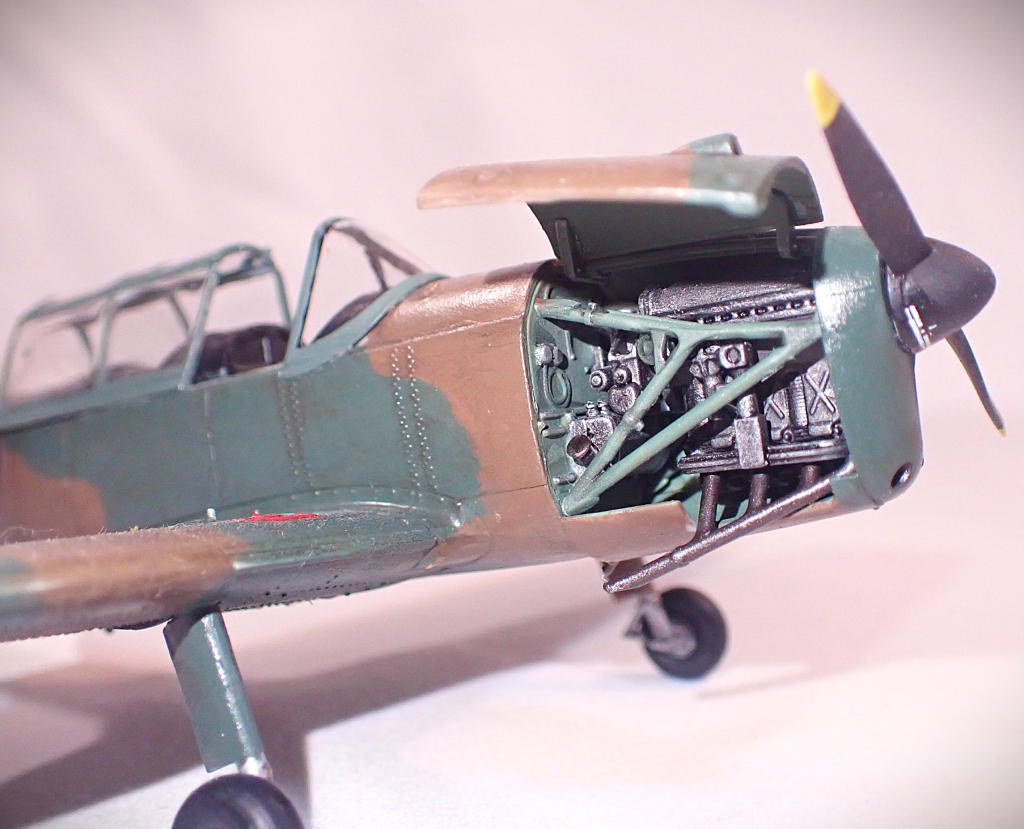The Model
This was built from a great little Airfix kit, new tooled, crisp and clean with excellent detail. The cockpit is a fine example with molded panels and hand painted instrument panel with seatbelts molded into the seats. I also left the cowling raised to expose the beautiful de Havilland Gipsy 10 engine.
I chose to make the Army Air Corps version. It is a de Havilland Chipmunk T.10 WP964 of the Army Aviation Centre, Middle Wallop, Hampshire in 1968. It is painted in the wrap around Dark Earth/Dark Green scheme adopted for the Army Air Corps. I wasn’t sure about the roundels on the upper wings, despite afoot note in the instructions, so I put them on. Must have had them at some stage.
